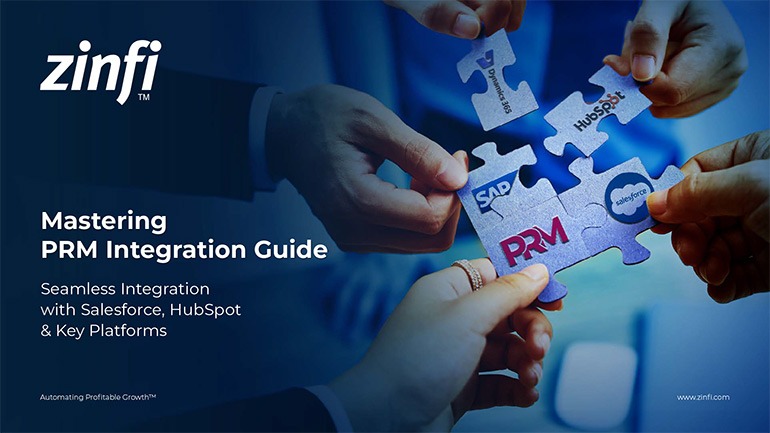Glossary - How to - PRM Software Solutions
How to Choose the Best PRM Software Solutions?
Introduction
Understanding PRM Software Solutions
Partner Relationship Management (PRM) software solutions are essential for managing relationships with partners, distributors, and resellers. PRM software enables businesses to streamline partner onboarding, automate deal registrations, enhance communication, and improve partner performance tracking. These solutions are crucial for optimizing partner ecosystems, ensuring efficiency, and driving revenue growth.
Importance of PRM Software Solutions in Partner Management
PRM software solutions provide automated workflows, real-time analytics, and seamless integrations with Customer Relationship Management (CRM) and Enterprise Resource Planning (ERP) systems. Effective partner management automation ensures transparency, boosts partner engagement, and enhances collaboration. Organizations leveraging PRM solutions can build stronger partnerships, minimize operational inefficiencies, and accelerate channel sales.
Key Takeaways:
Identify Business Needs and Objectives:
Before selecting a PRM software solution, businesses must define their partner management goals. Key questions include:
- What partner engagement challenges are currently faced?
- Which processes need automation?
- How many partners will be managed using the platform? A well-defined strategy ensures a PRM solution aligned with business needs.
Evaluate Core Features and Functionalities:
A robust PRM solution should include essential features such as:
- Partner onboarding automation: Simplifies the process of bringing new partners on board.
- Deal registration and management: Enhances transparency in sales processes.
- Marketing support tools: Provides co-branded assets and campaign automation.
- Performance tracking and analytics: Offers insights into partner contributions and success rates.
Assess Integration Capabilities:
Seamless integration with existing business tools, such as CRM, ERP, and Marketing Automation Platforms (MAPs), is crucial. Integrations help ensure smooth data flow and improve operational efficiency. The PRM solution should support API-based connectivity for easy data synchronization.
Consider Scalability and Customization:
Organizations should opt for PRM software solutions that scale as the business grows. Customization options, such as branding, workflow adjustments, and role-based access controls, enhance user experience and operational flexibility.
Review User Experience and Support Services:
An intuitive user interface and comprehensive support services, including training resources and dedicated account management, contribute to the successful adoption of PRM solutions. Vendors offering 24/7 support and a knowledge base can ensure a smoother implementation process.
Summary of Key Takeaways:
- Define business objectives before selecting a PRM solution.
- Look for essential features like onboarding, deal management, and marketing tools.
- Ensure integration capabilities with existing business systems.
- Choose scalable and customizable solutions.
- Prioritize user experience and vendor support.
Key Examples:
- Automotive Manufacturing: Automotive manufacturers use PRM solutions to manage dealership networks, streamline training programs, and optimize incentive management for sales partners.
- Consumer Electronics: PRM platforms help brands collaborate with distributors and retailers, ensuring proper inventory tracking and promotional campaign execution.
- Energy Production: Energy companies utilize PRM software to manage channel partners, oversee compliance regulations, and improve sales forecasting.
- Financial Services: Financial firms benefit from PRM solutions for tracking referral partners, managing affiliate programs, and ensuring regulatory compliance in partner operations.
- Food and Beverage: PRM software helps food and beverage companies streamline supplier management, coordinate distribution networks, and track sales performance.
- Healthcare Services: Healthcare organizations leverage PRM solutions to manage vendor relationships, track compliance, and improve partner engagement.
- Information Technology: IT companies use PRM platforms to enhance partner enablement, manage certifications, and track partner-led deals.
- Pharmaceutical Development: Pharmaceutical firms implement PRM software to monitor distribution partners, ensure compliance, and track clinical research collaborations.
- Retail Industry: Retailers use PRM tools for franchise management, co-op marketing, and seamless coordination with suppliers and distributors.
- Telecommunications: Telecom companies benefit from PRM software by automating partner onboarding, managing incentives, and tracking customer referrals.
Conclusion:
Selecting the right PRM software solution is crucial for businesses seeking to optimize partner relationships and drive channel growth. By identifying key business needs, evaluating essential features, ensuring seamless integrations, considering scalability, and prioritizing user experience, organizations can successfully implement PRM software tailored to their operations. Whether in automotive, healthcare, IT, or retail, a robust PRM system enhances efficiency, improves collaboration, and maximizes revenue potential.
Associated Keywords:
- Best PRM Software for Enterprises
- PRM Software Comparison
- How to Implement PRM Software















